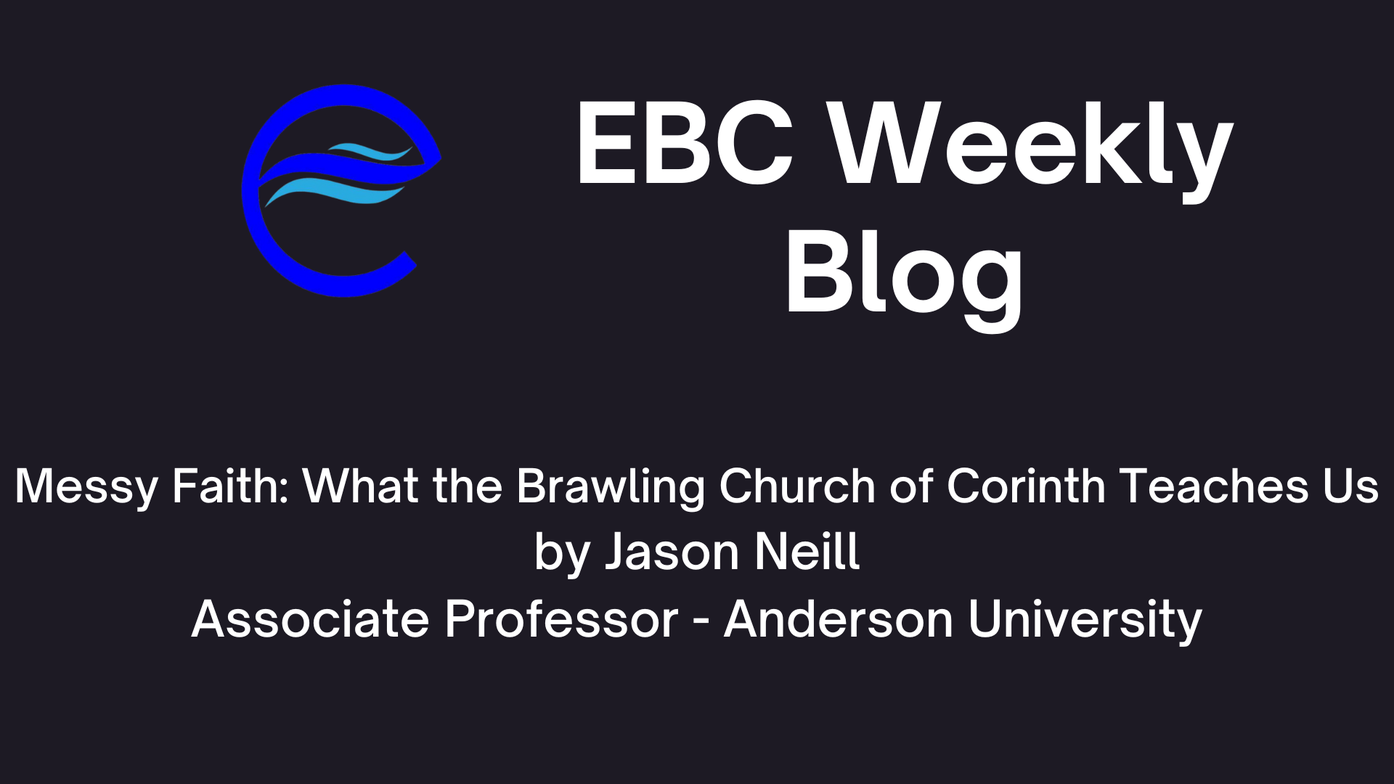Messy Faith: What the Brawling Church of Corinth Teaches Us


November 24, 2025
Messy Faith: What the Brawling Church of Corinth Teaches Us
by Jason Neill
Scripture reading: 1 & 2 Corinthians
Sanctification, becoming more like Christ in character, is a messy process. Don’t take my word for it, reading 1 and 2 Corinthians should certainly prove my point. The church at Corinth was a messy congregation, known for Christians behaving badly. Specifically, believers at Corinth were dealing with a host of issues:
- They were divided over certain leaders (see 1 Corinthians 1:10-17).
- They were taking each other to court (see 1 Corinthians 6:1-11).
- They were abusing the worship service (see 1 Corinthians 11:1-34).
- They were struggling with theological issues such as denying the bodily resurrection (see 1 Corinthians 15:1-58).
- There was a reported case of sexual immorality (see 1 Corinthians 5:1-13)
Corinth was a church the Apostle Paul started on his second missionary journey (see Acts 18:1-17). According to Dr. Tom Constable, the Apostle Paul’s chronological contact with this church can be viewed in the PDF attachment below. (Source: Nelson’s New Testament Survey by Mark Bailey & Tom Constable)
Former Letter (Lost): While in Ephesus, Paul heard about immorality at Corinth and decided to write them a letter (see 1 Corinthians 5:9). Unfortunately, we do not have that letter in our possession.
1 Corinthians (Our Second Letter): Afterwards, Paul received a letter from the church asking for his guidance on certain issues (see 1 Corinthians 7:1). The believers who visited Paul in Ephesus, bringing the letter, also made him aware of the divisions within the church, which he addressed (1:11; 16:17). Technically, 1 Corinthians in our Bible is Paul’s second letter to the Corinthians, most likely written in A.D. 56.
The Painful Visit: The second letter Paul wrote (our 1 Corinthians) did not resolve the issues at the church. So, Paul visited them in person. He calls this trip his “painful visit” (see 2 Corinthians 2:1). It was painful because a group within the church had cast doubt on the veracity of Paul’s apostleship, ridiculing him. Paul addresses this group in 2 Corinthians 10-13. Consequently, he left without a resolution.
The Severe Letter (Lost): Paul then wrote a “severe letter” to the church (2 Corinthians 2:1-4). We do not have a copy of Paul’s “severe letter”.
2 Corinthians (Our Fourth Letter): The “severe letter” had the desired effect, so Paul wrote 2 Corinthians (his fourth letter to the Corinthians). While in Ephesus, persecution broke out, forcing him to leave (see Acts 20:1), making his way to Troas. Titus, a fellow worker with Paul who delivered the “severe letter,” was supposed to meet Paul in Troas but ended up meeting him in Macedonia, giving him the good news that the church had repented (e.g., changed their minds), and now submitted to Paul’s correction. In 2 Corinthians, Paul’s most personal letter, he defends his apostleship (see 2 Corinthians 1:12-7:16; 10-12) to that small faction that still opposed his authority. It was likely written in A.D. 56.
Here’s a brief outline of both books:
1 Corinthians
I. Introduction (1:1-9)
II. The Church’s Problems (1:10-6:20)
III. Paul Answers Their Questions (7:1-16:12)
IV. Conclusion (16:13-24)
2 Corinthians
I. Introduction (1:1-11)
II. Paul Addresses His Accusers (1:12-7:16)
III. Guidance Regarding the Offering for the Jerusalem Church (8-9)
IV. Paul Defends His Apostleship (10-13:10)
V. Conclusion (13:11-14)
Application: What Corinth Teaches Us
Ultimately, Paul pointed the Corinthians past their quarreling leaders and the abuse of gifts to the one thing that truly builds up the body: love (see 1 Corinthians 13). If we are to overcome our own divisions and behavioral problems, we must choose self-giving love over selfish knowledge, personal preference, or worldly pride.
Keep reading your Bible!